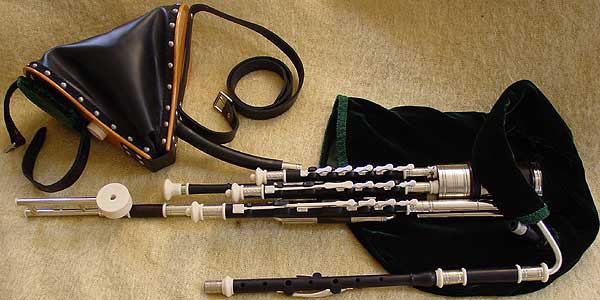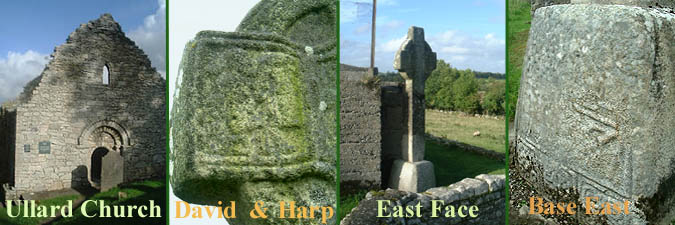There are many forms of aerophones used in traditional Irish Folk music. The most common of these being the tin whistle a relative of the recorder.
Perhaps the most strange looking are the Uillean pipes. Thought to be a partial translation of the Gaelic píobaí uilleann( pipes of the elbow). Unlike other forms of bagpipes uilleann pipes are played with a bellows under the elbow( perhaps how the name came about).
Traditional Uilleann pipes
It is believed that before the 17th century the more typical mouth blown bagpipes were used.
The full set of uilleann pipes comprises a bag, bellows, chanter, 3 drones and 3 regulators, and has a range of two octaves compared with the 9 note scale of Scottish bagpipes.
Seamus Ennis, God of Uilleann Pipe
Tin Whistle
Perhaps one of the most well known instruments used in Irish Folk music is the tin whistle.
Generally one of the first instruments learned, The tin whistle is a 6 hole diatonic relative of the recorder. Most common in D, tough also seen in other keys such as C, the diatonic nature of the tin whistle means it can easily be easily played in two keys. For the D whistles this would be D and G, named for the lowest note playable, the tonic of the lowest major key. A C whistle would accommodate the keys of C and F. This diatonic nature also means the whistles are able to play in the relative minor keys and associated modes. Techniques such as half holing(half covering a finger hole) and cross fingering(leaving a higher hole open) allow players to perform accidentals and notes not with in the key of the whistle as this chart below shows for a D whistle.
The Tinwhistle Fingering Chart
Howard Shore made good use of the tin whistle in Lord of the Rings for the Hobbit Theme, paired with a violin, this is almost a typical Irish Folk instrumentation until the full orchestra starts.
The Lord of the Rings - The Shire/The Hobbit
Reference:
Gallagher Seth, Seth Gallagher Workshop 1997—2012 (image) [online] available at:<http://www.uilleann.com/pipes.html> (accessed 29 September 2013)
Tara Music Company Limited 'THE UILLEANN PIPES' 1999 - 2013 (article) [online] Available at:<http://www.taramusic.com/features/uilleann.htm> (accessed 29 September 2013)
Seamus Ennis, God of Uilleann Pipes, peabodyharris, Uploaded 4 Sep 2006, (video) [online] Available at:<https://www.youtube.com/watch?v=aF3fW4Nox9U> (accessed 29 September 2013)
TelfordTotally Turquoise, 'THE Tinwhistle Fingering Chart' fullbodyburn 2013 (image) (article) [online] Available at:<http://fullbodyburn.com/?page_id=108> (accessed 29 September 2013)
The Lord of the Rings - The Shire/The Hobbit, jediking12 uploaded 1 Feb 2011 (videeo) [online] available at:<https://www.youtube.com/watch?v=dYhRGV8-kMw> (accessed 29 September 2013)



